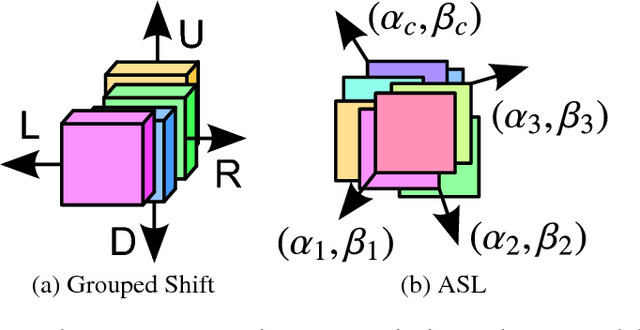Constructing Fast Network through Deconstruction of Convolution
Paper and Code
Oct 31, 2018



Convolutional neural networks have achieved great success in various vision tasks; however, they incur heavy resource costs. By using deeper and wider networks, network accuracy can be improved rapidly. However, in an environment with limited resources (e.g., mobile applications), heavy networks may not be usable. This study shows that naive convolution can be deconstructed into a shift operation and pointwise convolution. To cope with various convolutions, we propose a new shift operation called active shift layer (ASL) that formulates the amount of shift as a learnable function with shift parameters. This new layer can be optimized end-to-end through backpropagation and it can provide optimal shift values. Finally, we apply this layer to a light and fast network that surpasses existing state-of-the-art networks.
 Add to Chrome
Add to Chrome Add to Firefox
Add to Firefox Add to Edge
Add to Edge